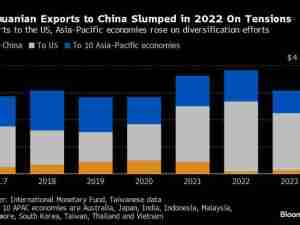Zimbabwe is considering importing corn from Brazil for the first time since 2014 as the El Niño weather pattern withers crops in the country and its neighbors.
The dry spell triggered by the phenomenon has slashed South Africa’s corn crop by at least 20% and Zimbabwe’s by about 60%. Malawi, Zambia and Zimbabwe have declared states of national disaster because of the crop failures.
Normally, the three nations are self-sufficient or can meet the bulk of their own needs with occasional shortfalls covered by imports from South Africa, the biggest producer in the region. This may be difficult this year with South Africa producing less.
White corn for July delivery rose to a record 5,518 rand ($291) a ton in intraday trading on the South African Futures Exchange in Johannesburg on Monday before closing at 5,512 rand a ton as concern grows about supplies. It has gained almost 40% so far this year.
“I will be heading a delegation to Sao Paulo later this month to look for in excess of 300,000 tons of maize,” said Tafadzwa Musarara, chairman of Zimbabwe’s Grain Millers Association, using the local term for corn.
The association represents the country’s privately owned grain millers who are authorized to import corn.
White corn is a staple in southern Africa used to make meals such as pap and sadza, while the yellow variety is used for animal feed. Unlike yellow corn, which is readily available internationally, white isn’t.
The imports are likely to be more costly than those from South Africa because they will need to be transported by sea and will take longer to deliver, adding to pressures on inflation, which stands at 55.3% in Zimbabwe.
Still, Zimbabwe’s approach is timeous, said Wandile Sihlobo, chief economist at the Agricultural Business Chamber of South Africa.
“This is a progressive step as regional maize supplies will be tight from the third quarter of this year into the first quarter of 2025,” he said in a response to queries.





